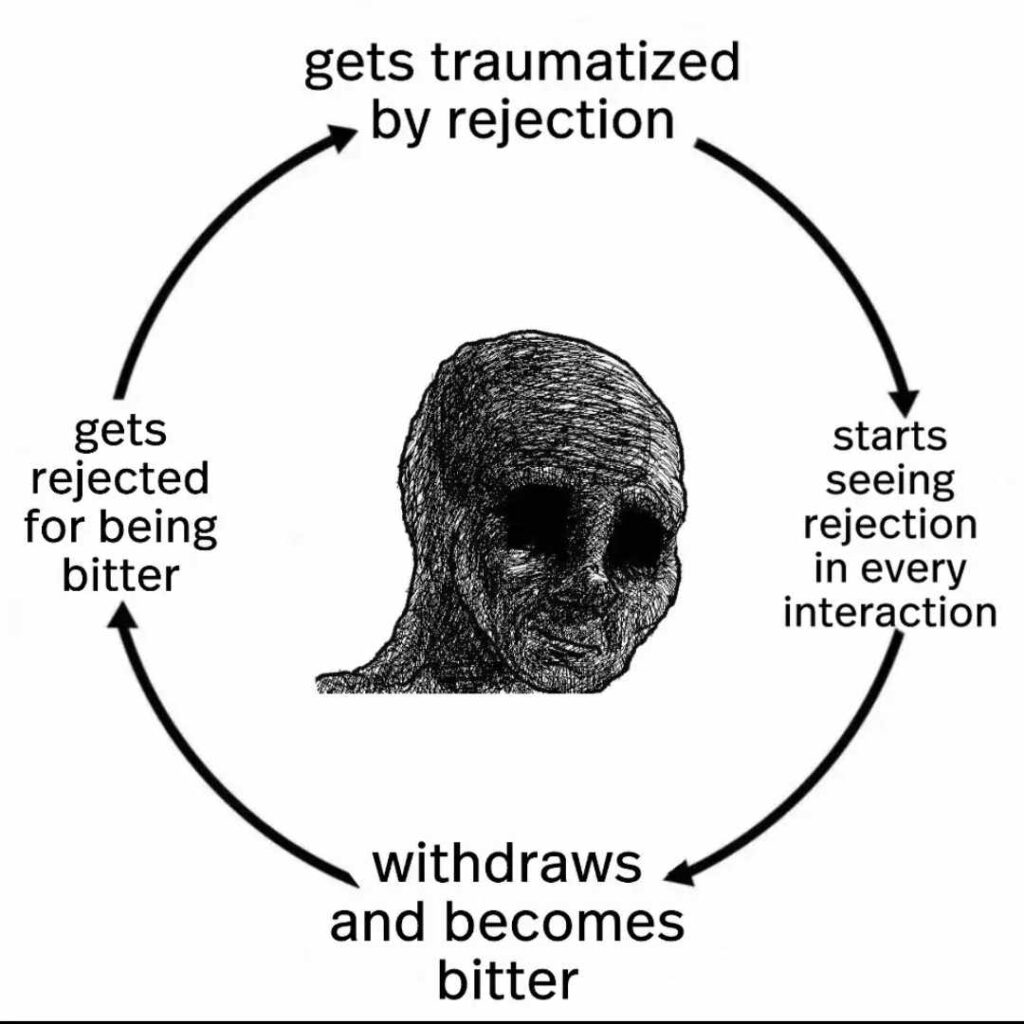Dr. Gabor Maté and Dr. Bessel van der Kolk both explore trauma as a deeply embodied experience, one that shapes not only emotions and thoughts but also the nervous system, behavior, and perception of reality. Through their lens, self-traumatization through rejection can be understood as a cyclical process where past wounds are continuously reopened and reinforced, leading to a self-fulfilling prophecy of isolation and suffering.
The Core Wound of Rejection
Rejection is one of the most fundamental and painful human experiences. From an attachment and developmental trauma perspective, rejection—especially early in life—shapes how we see ourselves and how we interpret interactions with others. Gabor Maté, in his work on childhood development and addiction, suggests that when a child experiences rejection (whether overt or subtle), they internalize it as a message:
“I am unworthy of love. I am not good enough.”
Van der Kolk, in The Body Keeps the Score, describes how trauma imprints itself on the nervous system, making it difficult for individuals to regulate emotions and form secure attachments. If rejection is a central trauma, the body remains on high alert for further rejection, scanning every social interaction for signs of exclusion.
Rejection Perceived Everywhere
Once the trauma of rejection is embedded in the psyche and nervous system, it alters perception. The traumatized individual begins to expect rejection, even where none exists. The brain, wired to anticipate pain, sees threats in neutral interactions:
- A friend taking a while to text back is perceived as a deliberate snub.
- A colleague’s distracted response feels like intentional avoidance.
- A partner’s need for space is mistaken for emotional abandonment.
This hyper-vigilance creates a self-reinforcing loop. The world becomes a hostile place where rejection is assumed, leading to behaviors meant to protect against further pain but that, ironically, invite more rejection.
Withdrawal and Bitterness
To avoid further hurt, the individual withdraws. This self-isolation initially feels like a protective measure—“If I don’t engage, I can’t be hurt.” But as Maté highlights, human beings are wired for connection. Prolonged isolation breeds loneliness, frustration, and eventually bitterness.
Bitterness manifests as:
- Cynicism (“People are fake. They always leave.”)
- Resentment (“No one cares about me anyway.”)
- Passive-aggressive behavior (dismissing others before they can dismiss you).
These defense mechanisms push others away, reinforcing the original fear of rejection.
Being Rejected for Bitterness
As bitterness seeps into interactions, it creates a negative feedback loop. Others sense the guardedness, resentment, or emotional shutdown, making connection difficult. People may distance themselves, confirming the rejected person’s worst fears:
“See? They always leave. I knew I wasn’t good enough.”
This final rejection deepens the trauma, returning the individual to square one. The original wound of rejection is reopened, the cycle continues, and the self-traumatization perpetuates itself.
Breaking the Cycle
Both Maté and van der Kolk emphasize that healing requires breaking the trauma loop. This involves:
- Awareness – Recognizing that rejection wounds are distorting perception.
- Self-Regulation – Using mindfulness, breathwork, or therapy to calm the nervous system’s hyper-vigilance.
- Reframing Interactions – Challenging automatic negative thoughts and considering alternative explanations for social cues.
- Vulnerability & Connection – Seeking safe relationships where open, honest communication is possible.
- Compassion & Self-Forgiveness – Accepting that past rejection does not define worth.
Healing is about learning that rejection—real or perceived—does not equate to personal failure. By rewriting the story of rejection, individuals can step out of self-traumatization and into self-acceptance.


